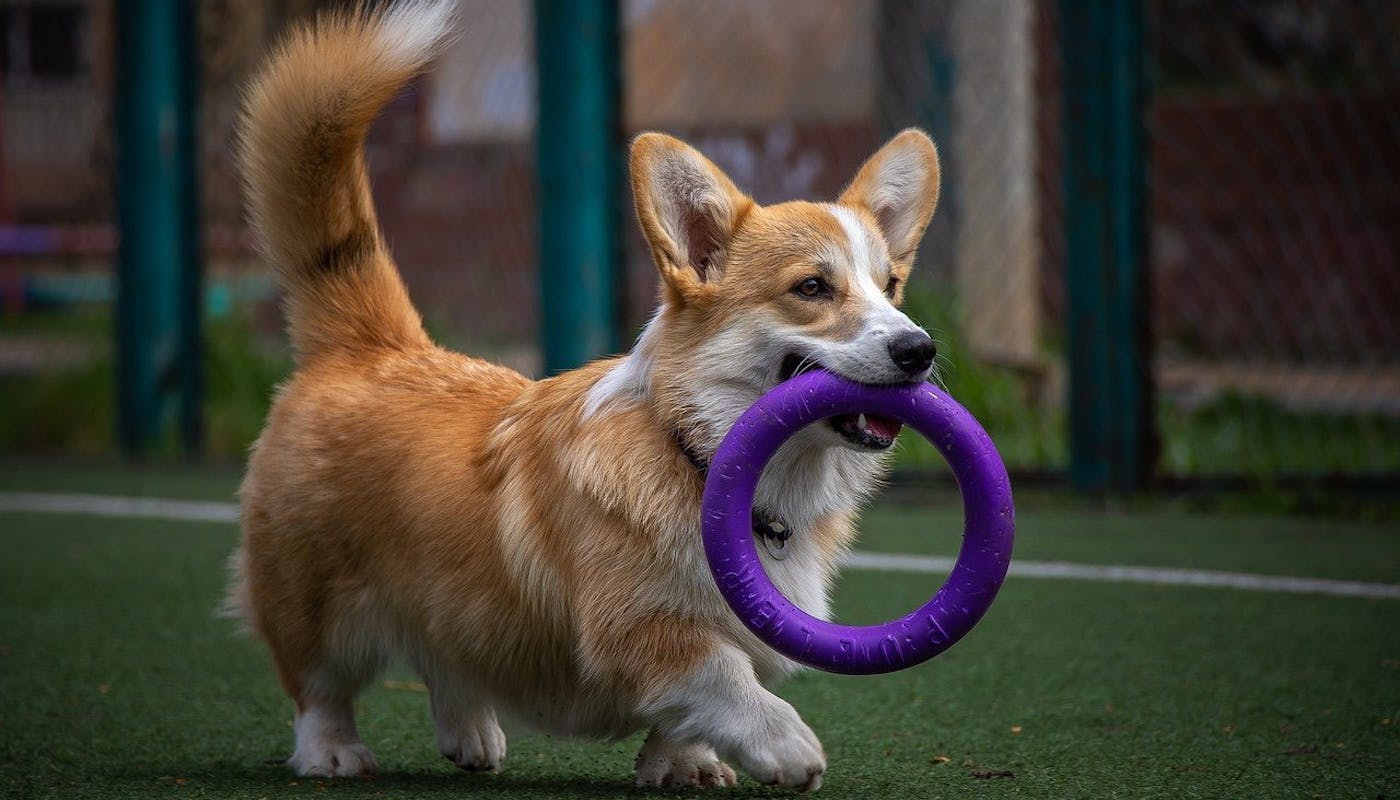5 Top Dog Training Methods
Before you book your dog into your nearest dog training school, investigate their methods and review your own beliefs. There are several popular training methods – all have their advantages and disadvantages, and we’ll review their main principles in this article.
Positive Reinforcement Training
If you’ve been following our content for a while then you’ll know that we are fans of this technique!
Positive reinforcement or reward-based training means teaching your dog that good behavior = good things. It’s simple to understand and to put into practice, allowing a loving bond to form between dog and owner. You can use a variety of treats, ranging from verbal praise to play or food.
There is no scolding or punishment in this technique, so it is suitable for dogs who are prone to anxiety. Positive reinforcement training is thought to be faster than traditional training, and less likely to cause behavioral disorders.
However, it can be difficult to correct faulty behavior using this method. Leash-walking is difficult to practice – providing treats for your dog while they stay at heel might not be good enough, compared with the reward of reaching the park faster!
Alpha Dog Training
Alpha Dog Training, or dominance training, is a technique that hasn’t worked as well for many of us at FOTP HQ.
It’s based on the old-fashioned belief that dogs fought for position in their pack. And its principles follow from that idea – so owners are advised to enter a room before their dog, and eat meals before the dog is fed.
In the past, this dog training method has included the ‘alpha roll’, kneeing a dog who jumps up, and walking with choke chains. Many people believe that these strategies are more likely to cause aggression and stress in dogs.
More recent researchhttps://www.scientificamerican.com/article/is-the-alpha-wolf-idea-a-myth/ has shown that in the wild, wolves don’t actually follow this Alpha mentality. So enforcing it with our own dogs doesn’t make a lot of sense.
Negative Dog Training
This type of training doesn’t just include use of punishments like an electronic shock collar. It can also include corrective techniques, such as using a leash to keep your dog in the right walking position or using a bad-tasting spray to prevent your dog from chewing furniture. Like humans, dogs learn to avoid a negative outcome.
While an electronic collar is regarded by many to cause psychological damage to your dog, some of the negative techniques are less damaging and can be successful. While we should never deliberately cause distress to our dogs, we can set up obstacles to make bad behavior less ‘fun’ for them!
Clicker Dog Training
Agility training often involves the use of a clicker. It’s a small device held by the trainer. When the dog displays the correct behavior, they press the clicker and sometimes also give a reward.
The benefit of using a clicker is that the dog can accurately identify the behavior that earned their reward. They’ll learn to associate the ‘click’ with a positive feeling – it means they’ve earned praise.
Clicker training is great for dogs who are performing in shows or at work. The clicker saves the trainer’s voice and can also be used by different people. This method is essentially another form of reward-based training and one plenty of us here in the FOTP office have found very productive.
Traditional Dog Training
Established around 100 years ago, traditional dog training contained the origins of most modern schools of thought. It included both positive and negative reinforcement. It typically included physical coercion as well as deterrents, which were used to establish the owner as the authority figure.
Essentially, it’s a form of conditioning where the dog learns that every behavior has a consequence (good or bad).
Because it includes the use of punishments – which may be physical, such as pulling on choke chains – traditional dog training can cause stress to dogs. This has been shown to provoke aggression and raise the risk of keeping dogs at home.
If you want to adopt the traditional method, think carefully about the types of consequences that you are prepared to deal out to your dog. Like most of the dog training methods, this one can be adjusted to suit your dog’s personality and your own ideas about behavior.
Further Reading
There’s loads of content here on the blog to help you start your dog training journey. Read about five basic commands to teach your dog/learn/dog-training/basic-commands-to-teach-your-dog. Learn how to start teaching recall/learn/dog-training/how-to-teach-a-dog-to-come, how to teach your dog their name/learn/dog-training/how-to-teach-a-dog-its-name, and how to teach a dog to offer ‘paw’/learn/dog-training/how-to-teach-a-dog-paw.
